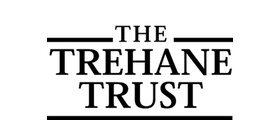Report Synopsis
Put a label on it: why the future of cow’s milk is a branded one
Despite cow’s milk being consumed by 87% of the population in the UK there are concerns that it is vulnerable to falling out of fashion with a younger generation. It’s the same story in the US where generic marketing tactics like the long-running ‘Got Milk?’ campaign has failed to stop per capita consumption of cow’s milk in the US falling by one-third since the 1970s. In contrast, sales of plant-based ‘milks’ in the US were worth an estimated $2 billion in 2017,accounting for around 10% of the total milk market. Several major dairy companies have already started producing plant-based ‘milks’ or bought into non-cow’s ‘milk’ companies.
The purpose of this study was to understand what constitutes a viable future for the cow’s milk –as opposed to the wider dairy -category. Travelling around major milk consumer markets in North America and Europe and interviewing key stakeholders and consumer experts reveals a sector that has lost its monopoly, with eating habits, lifestyles, innovation and supermarket shelves no longer wedded to milk. Consumers have also long lost their connection to dairy farming and struggle to comprehend the reality of the industry today with bucolic childhood images.
The biggest failure with the marketing of milk is how undervalued liquid milk is by the marketplace. Supermarkets have long used milk as a low margin product or even loss leader and that shows no signs of changing, with Walmart openly talking of being able to cut milk production costs further in the US. This focus on price and standardisation has created a race to the bottom which in turn is holding back innovation.
The key recommendation of this report is the importance of investing in the emerging branded market, which accounts for less than 20% of all UK milk sales but is driving growth. The new barista milks, kefir drinks and other drinkable milk products providing a specific taste, health or nutritional benefit are clearly capturing the changing eating habits, interests and life styles of consumers. Some are not even marketing themselves as a milk product. If cow’s milk can define its points of difference, the liquid milk category still has a future to be more than an undervalued commodity, even if the word itself becomes redundant.
Although some producers have got involved in direct selling, building a successful brand is a significant time and financial commitment. Alternatively, some are collaborating with businesses and entrepreneurs in the supply chain to deliver branded milk products. Dairy producers may prefer to rely on retailers, but retailers have done little, or been unable, to significantly improve the value of milk. And, as they have shown with their heavy promotion of ‘milk’ alternatives, their loyalty is to consumers, not cow’s milk producers. In the long term, dairy producers should be open to seeking partners who have other supply chain skills, expertise and contacts.
Tom Levitt

The Trehane Trust

Similar Reports
- 2023
What's the beef? Opportunities for beef on dairy in New Zealand.
Matt Iremonger - 2023
The world of cacao
Linda Kopczinski - 2022
How to produce the best milk
Dorieke Goodijk - 2022
Toward Sustainable Livestock: Integrating Domestic Feed and Exports
Shinya Okazaki
